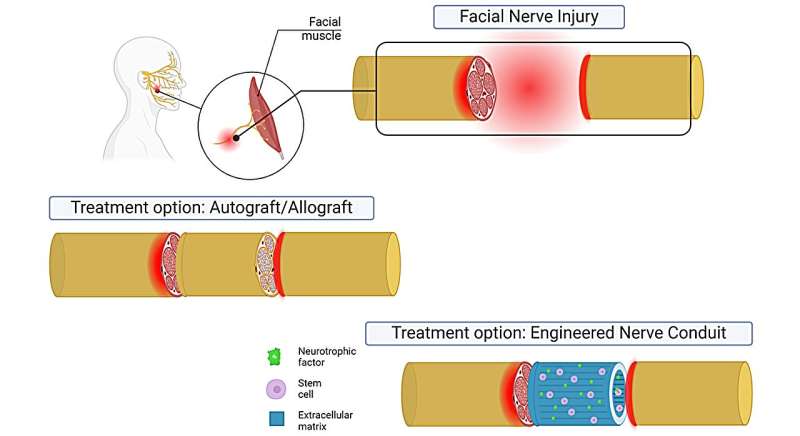These conditions are typically treated with nerve tissue taken from elsewhere in a patient’s body, known as autografts. This technique for repairing injured nerves presents issues for patients, such as damage to the donor site and the odds of functional recovery being nearly a coin toss. Synthetic alternatives have been explored in the past but have yet to live up to the performance of autografts.
Bioengineers at the University of Pittsburgh may have developed a new solution with the help of some of nature’s best engineers—stem cells. Leveraging these cells’ ability to create a restorative environment, the team produced implantable conduits to act as bridges, providing directional, mechanical, and biochemical guidance for injured nerves to regenerate across large gaps.
Experiments in the facial nerves of rats showed that the technology matched autografts. These results were published in the Journal of Neural Engineering.

